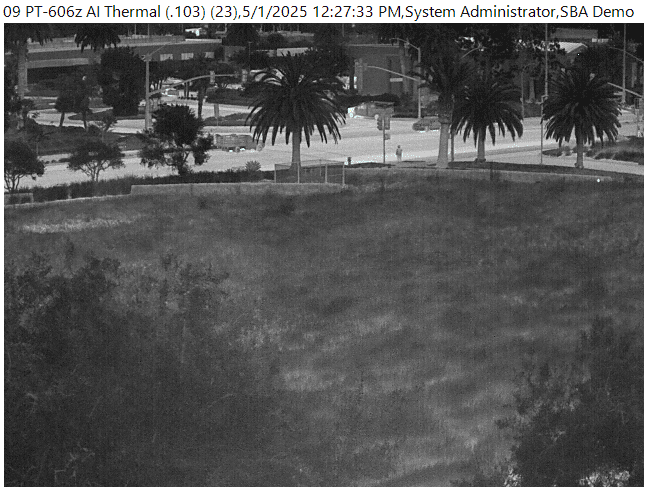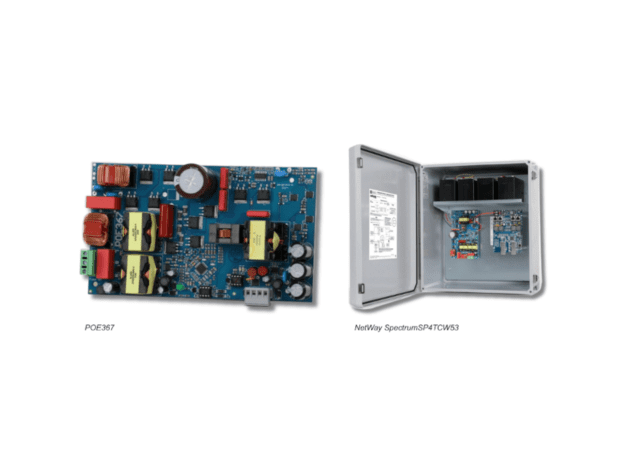
Sam Eaton, Business Development Manager at Wireless Logic discusses cellular connectivity and CCTV.
As on-site security setups have evolved and technology has become more accessible, CCTV has become a major component in the industry. Outside of on-site security, CCTV has also been increasingly used with software that overlays video feeds, facilitating applications such as occupancy monitoring, motion detection and Automatic Number Plate Recognition (ANPR), expanding the use of CCTV even further.
The use of CCTV has become so widespread that it is believed that there are over 600,000 CCTV cameras currently deployed in London alone and by 2021, IHS Markit anticipates that there will be one billion active across the world. Historically, CCTV-generated video was kept and viewed on-premise, but users now demand real-time feeds, accessible from any location. In order to facilitate this, having a resilient, secure and low-cost network connection is vital.
4G and CCTV
The increased demand for resilient and reliable connectivity has resulted in the primary deployment of two solutions for CCTV – wired connections or WiFi – with 4G connectivity traditionally seen as a costlier and less commonly leveraged alternative. Until now, cellular connectivity has only typically been used in locations where fixed line connectivity isn’t easily available, however we’re now starting to see a shift in this trend.
Cellular connectivity is becoming the preferred option for CCTV connections because it can be rapidly deployed, cellular data costs have decreased and 4G connectivity allows for easy access and remote monitoring for CCTV applications. With fixed line connections, if the infrastructure is not readily available where it is needed then deployment takes longer and there is the added cost of laying cable, making it a much less efficient process.
Having remote monitoring capabilities is crucial for many businesses and is one of the biggest reasons why there has been a big uptake in cellular connectivity. With 4G connectivity, users can choose to view CCTV images in real time from any device, as well as set up alerts and notifications for mobile devices or elsewhere.
An ‘always on’ approach is essential for providing remote alarm conditions, monitoring and notification across high-speed cellular connectivity. By using 4G connectivity, businesses can ensure they have a reliable platform that supports live video and CCTV images that create new capabilities in the field of remote automated security.
Why Cellular?
The crucial benefit of cellular connectivity is the ability to rapidly roll out connections to a range of locations and similarly, easily scale up any existing connectivity. Having routers that are pre-configured with connectivity means that businesses have the choice to take advantage of cellular options or alternatively use existing fixed line connections. Not only this, but it also means that in the case of any network outages, the router can easily reconnect to the most readily available alternative network, whether that is through cellular connectivity or reverting to a fixed-line connection. This eliminates any resilience issues that could be caused by CCTV down-time, including data loss.
Rapid deployment isn’t the only reason that businesses are turning to cellular connectivity. A cellular connection also brings with it an increased amount of network flexibility and a much simpler connectivity management platform (CMP) for control and visibility of SIM and data usage – especially where multiple cameras and networks are deployed.
Staying Secure
While the deployment of CCTV is designed for security and managing, the technology itself can often fall prone to cyber risks – predominantly through (commonly used) public facing IP addresses. Used typically for companies to be able to login to cameras from anywhere at any time, a public facing IP is accessible by anyone with the correct details. Of course, this is useful for companies, but in the wrong hands external threats can hack cameras and spam them from multiple locations – potentially increasing connectivity costs (for which the responsible party can be liable) or even exposing private data.
A more secure connection route comes through the use of Virtual Private Networks (VPNs) – which are much less prone to hacking and are a more viable option for organisations. Rather than logging into public facing IPs, with a VPN users can be sent a downloadable link and gain direct access exclusively, keeping them much more secure as the data is encrypted. With data security being of absolute importance, it is also recommended to work with partners who can follow strict processes and demonstrate a commitment to keeping information and data secure.
CCTV beyond monitoring
CCTV’s use outside of the on-site security market is also on the rise, such as police forces using Automatic Number Plate Recognition (ANPR) software within CCTV to help find and track vehicles, with both static and mobile cameras. Similarly, CCTV can be leveraged for occupancy monitoring, which can help ensure that social distancing is being practised within these buildings.
While both cellular and fixed-line options can provide fast connectivity, 4G offers much more flexibility, resilience and reliability for a wide range of applications. For example, mobile ANPR cameras (such as those in police vehicles) require the network flexibility and resiliency that is delivered by cellular connectivity. Aside from protecting building sites or keeping an eye on street activity, 4G opens up a new world of monitoring possibilities for CCTV.
5G and eSIM in CCTV
CCTV will continue to be a central element of security and monitoring approaches, so it is inevitable that new and emerging technologies – such as 5G and eSIM – will be used to augment and create new opportunities for these solutions.
While 5G networks are still in their infancy, it is clear that they will bring faster speeds, higher bandwidth, lower latency and enhanced security capabilities. For the majority of today’s CCTV applications, 4G speeds and capabilities are more than sufficient, but it is likely that 5G will drive innovative new applications and use cases for CCTV.
eSIM (Embedded SIMs) and eUICC (Embedded Universal Integrated Circuit Cards), other emerging technologies, are likely to soon deliver improved scalability, global deployment and control for CCTV OEMs and solution providers. By integrating eUICC capability (i.e. the ability to switch network providers remotely without changing the SIM or eSIM) in devices, these businesses will soon be able to offer a seamless provisioning experience to the end user directly. With the right connectivity provider, this has the potential to create new revenue streams and create a direct relationship with end users.
For more information, please visit: https://www.wirelesslogic.com/
To stay up to date on the latest, trends, innovations, people news and company updates within the global security market please register to receive our newsletter here.
Media contact
Rebecca Morpeth Spayne,
Editor, Security Portfolio
Tel: +44 (0) 1622 823 922
Email: [email protected]






















